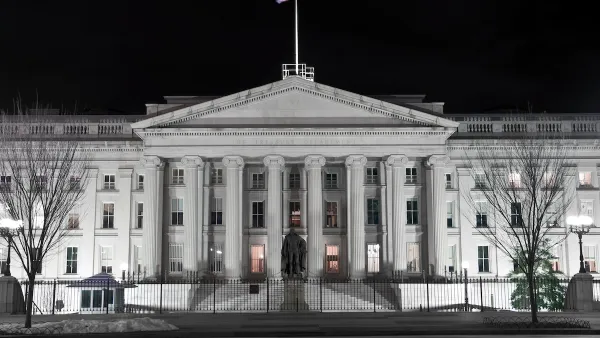The increasing investment value of real estate has led to tangible changes in the way buildings are designed and function, one author argues.

In what Leilani Farha, United Nations special rapporteur on adequate housing, calls "the financialization of housing," the rise in real estate investment has radically reshaped cities and "supersede[d] the traditional role of buildings," writes Nate Berg in Fast Company to introduce an interview with author Matthew Soules.
In the recently published book Icebergs, Zombies, and the Ultra Thin: Architecture and Capitalism in the Twenty-First Century, Soules "argues that value creation is being prioritized over the fundamental purposes of buildings and homes."
"The title of the book calls out three of the ways this is manifesting. Icebergs are the homes of the superrich in London that, due to building height rules, can see their values increased by adding new levels deeper and deeper below ground. Zombies are the half-dead neighborhoods in places like Dublin and southern Spain where speculative development and investment homes often sit empty. Ultra-thins are the tall luxury towers now popping up in cities around the world that serve less as places to live than as places to invest and grow the buyer’s money."
In the interview, Soules explains that these manifestations of finance capitalism are signs of the ways cities are being reshaped to serve capital and increase the liquidity of a traditionally non-liquid asset despite the needs of residents. In Soules' hometown of Vancouver, which is experiencing a huge demand for apartments with two or more bedrooms, "developers continue to build one-bedroom apartments and make their profits this way, to sell out projects over 50% to people who seem drawn to the investment power of the one-bedroom apartments that they then go and rent out, or in some cases let sit empty." According to Soules, "the logics of investment capital are having this slow but profound effect over time, that’s happening so in front of our eyes that it’s hard to even see, of diminishing the social richness of our living environments."
FULL STORY: How capitalism is reshaping cities (literally)

National Parks Layoffs Will Cause Communities to Lose Billions
Thousands of essential park workers were laid off this week, just before the busy spring break season.

Retro-silient?: America’s First “Eco-burb,” The Woodlands Turns 50
A master-planned community north of Houston offers lessons on green infrastructure and resilient design, but falls short of its founder’s lofty affordability and walkability goals.

Delivering for America Plan Will Downgrade Mail Service in at Least 49.5 Percent of Zip Codes
Republican and Democrat lawmakers criticize the plan for its disproportionate negative impact on rural communities.

Test News Post 1
This is a summary

Test News Headline 46
Test for the image on the front page.

Balancing Bombs and Butterflies: How the National Guard Protects a Rare Species
The National Guard at Fort Indiantown Gap uses GIS technology and land management strategies to balance military training with conservation efforts, ensuring the survival of the rare eastern regal fritillary butterfly.
Urban Design for Planners 1: Software Tools
This six-course series explores essential urban design concepts using open source software and equips planners with the tools they need to participate fully in the urban design process.
Planning for Universal Design
Learn the tools for implementing Universal Design in planning regulations.
EMC Planning Group, Inc.
Planetizen
Planetizen
Mpact (formerly Rail~Volution)
Great Falls Development Authority, Inc.
HUDs Office of Policy Development and Research
NYU Wagner Graduate School of Public Service





























